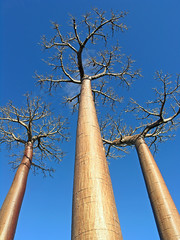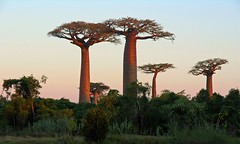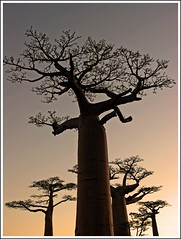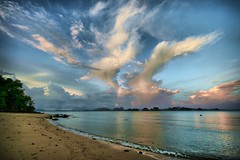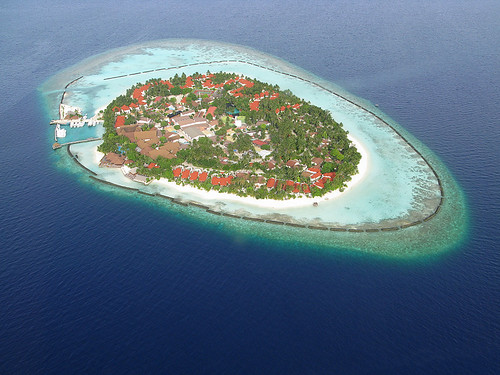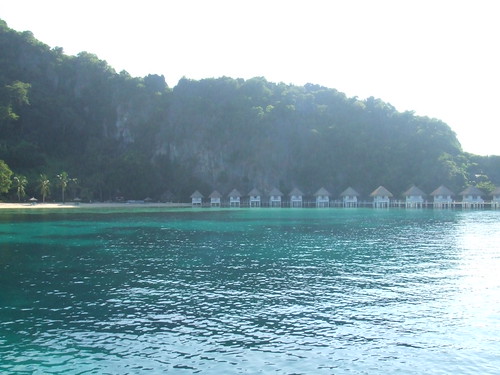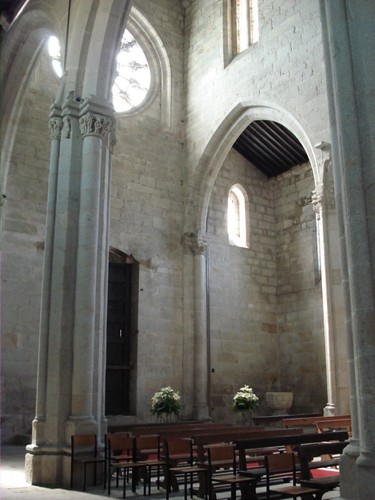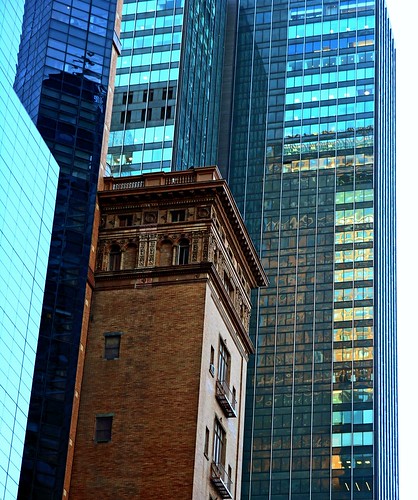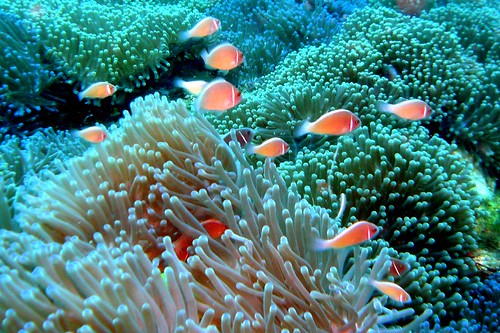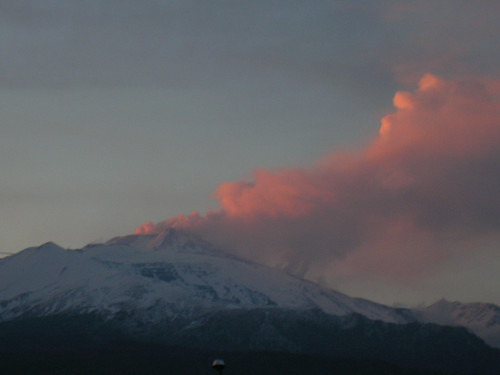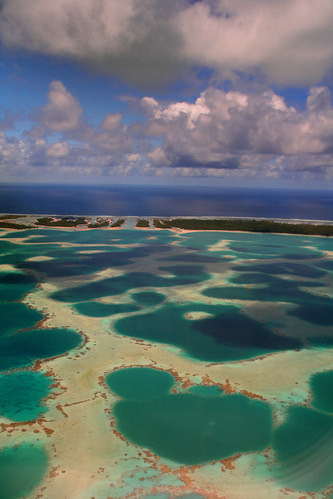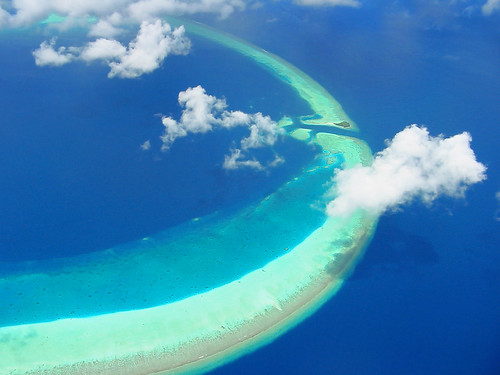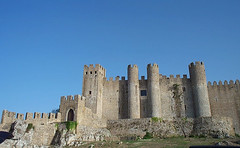Apr 30, 2009
LutHer...4ever!!!
This pic was taken off from the websites...
Guess who is...
Apr 23, 2009
Apr 22, 2009
Misool Eco Resort
:))))
OMG!!!! Look at this..... i always loved Papua... it has been over 20 years.... and now i can understand why!!
:~)
Well doneeeeeeeeeeeeeeeeeeeeeeeeeeeeeee Patrik N.!!!!!!
b mY VikyiNg
aLL aT:
http://manuworldweb.blogspot.com/2007/05/vikyings.html
Apr 19, 2009
wonDerfuL BaobaBs
..........................
Obrigado pela maravilhosa foto Zé Edu!!
:)))))))))))))))))))))
Apr 18, 2009
ThaiLanD , Ko Yao Phoenix
My Most interesting photos for a guy called Isaias
Ko Yao (Thai: เกาะยาว) is a district (Amphoe)
Ko Yao (เกาะยาว), sometimes written Koyao, is a group of islands between Phuket and Krabi. There are two main islands, Ko Yao Noi ("Small Long Island") and Ko Yao Yai, with Noi being the more developed of the two.
Ko Yao Noi remains a beautiful island, where most people still believe that the island should be preserved from human degradation.
Sea Gypsies (Moken people) were inhabiting the Bay before anybody else, except maybe other nomadic people like forest hunters and collectors (Sakai, Negritos). The 3,500 or so inhabitants of Koh Yao Noi are thought to be recent migrants from the Malay Peninsula (Satun, Trang).
The Mon population, linguistically and culturally belonging to the Khmer ethnolinguistic group, did settled in peninsular Thailand since ever, ruling maritime states like the one of Ligor (Nakhon Si Thammarat). They melt continuously with Southern migrants from Malaysia and with Northern rulers (Thai), over centuries of commercial exchanges and political conflicts. Most probably the Mon stock remains prevalent for most of the people living nowadays in Southern Thailand, including people of Koh Yao.
Numerous cave paintings hidden in the many islands of the bay, extending from 2000 years ago to last century, attest the influence of distinct communities in the emergence of a mixed origin population, living now in the provinces of Phang Nga, Phuket, Krabi and Satun.
The most recent migrations (17th-18th century) from Satun and Trang to Ko Yao Yai and Koh Yao Noi is attested by the fact that the particular dialect spoken on the island still bear obvious Malaysian lexical traces, particularely regarding toponyms and vernacular names of the flora species.
The main industries on the island are fishing and rubber planting. A little rice farming and some fruit, palm and coconut plantations are evident. Boat building and farming techniques here have been passed from father to son and, while some of the youngsters leave Ko Yao to seek the bright lights of Phuket, most return to their tight knit community
From: en.wikipedia.org/wiki/Amphoe_Ko_Yao
...........................
:))
Thanks Angela Lobefaro
Apr 16, 2009
Apr 14, 2009
LighTy & peaCefuLL
This monastery it's today proudly a national monument. It's a MEDIEVAL monument; it's one of the brightest architectural examples representing the transition between the ROMANIC to the GOTHIC styles. The origins are back to X century.
The monastery was built in the century XVI by Diogo Pires.
Where lies today this monastery, there was in the year of 900 (Yeah, really before you and me were both born!! But because we are all becoming obsolete, that it wasn’t much earlier than we were born!!LOL) a CONVENT, probably totally destroyed during the invasions of ALMANÇOR, in the beginning of the century XI.
From it’s Monastery itself, we have only the church remaining these days!!
This Monastery roof it's such a beauty!!!
Don't u agree??!!
More of architecture wonders!!!
LeÇa do BaliO MonasTerY, PorTuGaL
All about this journey of mine at:
manuworldnews.blogspot.com/2007/05/monastery-of-lea-do-ba...
Apr 13, 2009
Apr 11, 2009
School of Pink Anemonefish
Taken while scuba diving at "Chumporn Pinnacle" of Koh Tao, Thailand.
...................................
Super shot, thks Takau.
Etna afterglow, 4 April 2009
After a fairly cloudy day, which brought fresh snow falls to the upper slopes of Mount Etna, the volcano clears up just before sunset on 4 April 2009, revealing its stunning beauty. Dense gas (mostly vapor) plumes are produced by the summit craters, and significant columns of gas are also seen rising from the craters of the still-ongoing (since May 2008) upper east flank eruption at right. View from my home in Trecastagni.
.....................
Thks 4 the pics.
How fragile we are indeed!!!
Apr 10, 2009
Matava LAGooN
FRENCH POLYNESIA
northeast of Tahiti and a one hour flight ,this fragile crown of coral floating on the Pacific ocean.
situe a 450kms au nord-est de Tahiti et a une heure d'avion,cette fragile couronne de corail semble flotter sur l'ocean Pacifique.
Apr 9, 2009
Apr 7, 2009
tHe castLe
The name "Óbidos" probably derives from the Latin term oppidum, meaning "citadel", or "fortified city". Roman occupation of the area has been recently confirmed by archaeological excavations, which revealed the existence of a Roman city very close to the hill where the village is located. This Roman settlement is most certainly the mysterious Eburobrittium, cited by Pliny the Elder as situated between Collipo (near present-day Leiria) and Olisipo (Lisbon). Until now the surveys have revealed the rests of the forum, baths and other buildings.
After the fall of Roman domination, the region must have come under the influence of the Visigoths, although material evidence is lacking. The Roman town of Eburobrittium was probably abandoned in the 5th century for the more secure hill where Óbidos is located. Sometime after 713 the Moors established a fortification on top of the hill. A Christian community of Mozarabs lived in the Moncharro neighbourhood.
The area was taken from the Moors by the first King of Portugal, Afonso Henriques, in 1148. Tradition states that one knight, Gonçalo Mendes da Maia, was responsible for the successful storming of the Moorish castle. The retaking of Óbidos meant the end of the Reconquista of the Estremadura region, after the conquests of Santarém, Lisbon and Torres Vedras. The village received its first foral (charter) in 1195, under the reign of Sancho I.
In 1210, King Afonso II donated the village to his wife, Queen Urraca. Since then Óbidos has often belonged to the Queens of Portugal, giving rise to its informal title as Vila das Rainhas (Queens' village). Several Queens enriched the village with donations from the Middle Ages until the 16th century.
The castle of Óbidos and the walls of the village were remodelled under King Dinis I.It is made out of local limestone and marble. The village was also enlarged around this time, with settlements created outside the walls. The massive keep of the castle is attributed to a building campaign sponsored by Fernando I (late 14th century).
The Santa Maria Church of Óbidos was the setting for the wedding of King Afonso V with his cousin, Princess Isabel, on August 15th, 1441, when they were both still children of 9 and 10.
The town has a magnificent castle, now hosting a pousada. The municipality is also home to the well known and prestigious Praia D'el Rey golf complex, one of the top golf resorts in Europe.
INFO take from:
en.wikipedia.org/wiki/%C3%93bidos,_Portugal
Apr 6, 2009
ParaDise droWninG
The Maldives, threatened by drowning due to climate change, set to go carbon-neutral...
Recent news:
Worried their country will end up under water as the globe warms and sea ices melt, the government of the Maldives this week announced that the Indian Ocean nation will go carbon neutral by 2020. No part of the chain of 1,200 low-lying islets rises more than six feet (1.8 meters) or so above sea level, leaving the 400,000 inhabitants there at grave risk of rising sea levels and storm surges, environmental journalist Andy Revkin writes today in a New York Times blog.
The Maldives government last year considered setting aside funds from its main biz – tourism – to purchase land from another country, such as India or Sri Lanka, to eventually relocate its populace. Recent reports give urgency to the plan, indicating that sea levels are expected to rise some 3.3 feet (1 meter) by 2100, even faster than predicted in the already dire-sounding Intergovernmental Panel on Climate Change (IPCC) report released in 2007.
In an effort to prevent his archipelago nation from literally drowning, newly elected Maldives Prez Mohamed Nasheed said he will attempt to make the islands carbon-neutral by 2020 – the first country to do so, reports The Observer. How? By investing $1.1 billion over 10 years in alternative energies from rooftop solar arrays to wind turbines, to a biomass-burning power plant (in the tropical islands’ case, that means coconut husks), according to another New York Times blog today. “Going green might cost a lot," Nasheed said in an op-ed published this weekend in The Observer, "but refusing to act now will cost us the Earth."
Such an effort by the tiny nation is not likely to make much of a dent in total worldwide carbon dioxide emissions, given that the Maldives account for less than 0.1 percent of the total output (the U.S. and China combine for almost half). But the symbolic gesture may set an example for climate-polluting nations when they convene this December in Copenhagen, Denmark. There, the U.N. hopes to hammer out a new international climate change treaty to replace the 1992 Kyoto Protocol.
Apr 5, 2009
Goldrock Beach, Grand Bahama
Check out more photos and video on the web site: drinkofbeauty.com
Apr 4, 2009
Easter Egg handmade card
Handstamped egg is colored with shimmering stardust and is backed with dotty paper and a pink ribbon.
Greeting reads "Happy Easter" in blue ink.
Inside is a white paper insert that is blank for your own message.
Card measures 4.25"x 5.5" and has a top fold. It comes with a white envelope, all in a protective cello sleeve.
Buy at: www.chellebellecards.etsy.com




